Procedural Modeling of Cities
Urban Modeling Suite
Main Page, CORE Model Page, Road Network Builder Page, Urban Modeling Suite, Papers & Publications
Overview
Through our work on this project, we have formed the opinion that a series of simple models which focus on modeling different aspects of urban development can provide a better understanding of the underlying processes than combining all of the aspects into a single monolithic model. In particular, this has proved to be the case in pedagogical settings. Accordingly, we have put together a suite of models which spans the broad spectrum of topics relevant to urban planning.
Several of these models were originally authored by undergraduate students in the "Sprawl / Swarm" course at Illinois Institute of Technology in Fall 2006, under the supervision of Sarah Dunn and Martin Felsen. Others were created by members of this project for the purpose of illustrating a particular concept, such as the Positive Feedback model which replicates a model described the book Cities and Complexity, written by Michael Batty.
All Urban Suite models are automatically included in the most recent NetLogo release. They can be found in the Model Library and do not need to be separately downloaded.
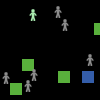
Awareness
This model simulates points of information and/or resource exchange in an urban environment, and examines the spread of the concept or resource through a population of agents.

Cells
This model explores 2-D cellular automata and as an introduction to spatial dynamics and growth of complex shapes from simple rules.
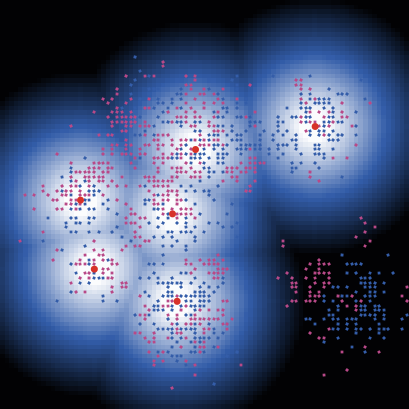
Economic Disparity
This model examines residential land-usage patterns from an economic perspective, using the socio-economic status of the agents to determine their preferences for choosing a location to live.

Path Dependence
This model examines positive feedback as it pertains to the concept of "path dependence" as explained by W. Brian Arthur in his paper, "Urban Systems and Path Dependence", as well as other papers.
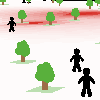
Pollution
This model studies the balance between the creation and remediation of pollution by agents in a simple simulated environment.

Positive Feedback
This model looks at the general concept of positive feedback, which is a prevalent phenomenon in many areas of urban development, and is crucial to understanding growth patterns.
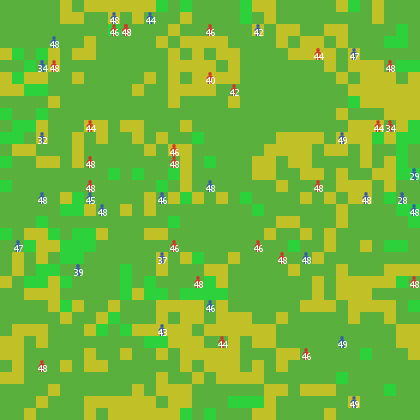
Recylcing
This model demonstrates relationships of agents (people) trying to sustain their natural resource of land over the course of time.
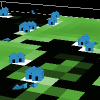
Sprawl Effect
This model demonstrates a simplified version of city growth and how it leads to urban sprawl and the problems connected with it (e.g. leapfrogging).
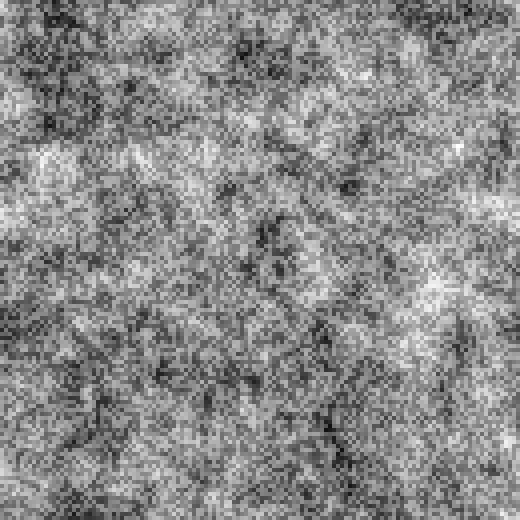
Structure from Randomness 1
This model demonstrates how identifiable structure can form out of random inital conditions, under a simple process.

Structure from Randomness 2
This is a second model showing how structure can form out of randomness. Both of these models are implementations of models found in Michael Batty's book "Cities and Complexity".
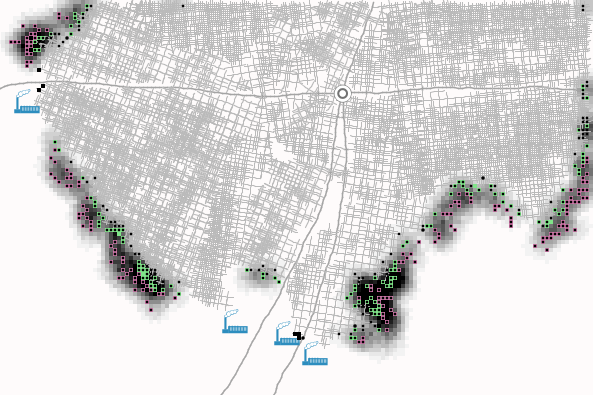
Tijuana Bordertowns
This model simulates various socio-economic realities of low-income residents of the City of Tijuana for the purpose of creating propositional design interventions.